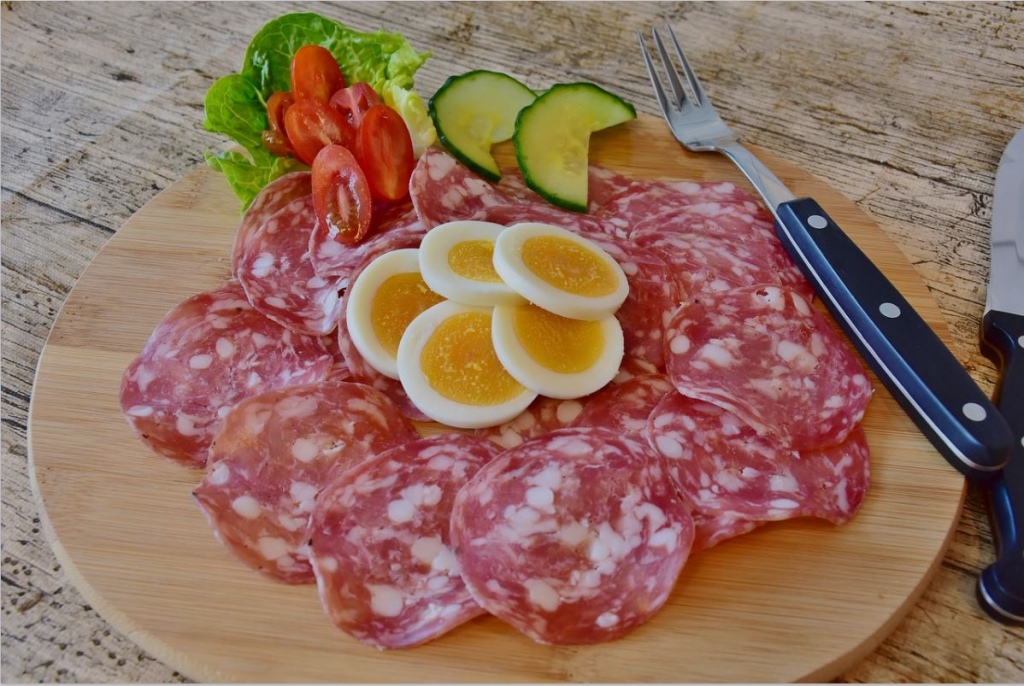<p>What cuisine do you think of when you think of Italy? Pasta and pizza, right? Italy actually has a rich culinary tradition that extends beyond those staples. You may even have had some of them before without even knowing they were Italian.</p>
<h2>Polenta</h2>
<p>While ground corn may be more of a midwestern staple, it is also a traditional Italian dish. Polenta is a common fixture at many a brunch menu and considered a classic Italian comfort food, yet it is still something of a <a href="https://www.huffpost.com/entry/polenta-what-is-it_n_5996020">mysterious</a> dish. It is ground cornmeal made from flint corn. However, don’t confuse polenta with grits! Polenta has a coarser texture because of the flint corn. Grits are made from dent corn which gives them their &#8220;mushy&#8221; texture. You can make your own polenta by cooking it slowly on the stove with a combination of water and milk, butter, or cream.</p>
<h2>Steak</h2>
<p>While many people think of grains and sauces as the heart of Italian tradition, steak is just as prominent a meal in traditional Italian cuisine as crispy bread. Italians cook steak in a very particular way. They call it <a href="https://www.nytimes.com/2013/03/13/dining/tagliata-italian-for-sliced-steak.html">tagliata</a>. The word means both &#8220;cut&#8221; and a generic term for sliced meat. Any cut of steak will suffice but, as <a href="https://zprime.com/">Z Prime Steakhouse</a> knows, it&#8217;s the seasoning that makes the difference. Traditional recipes favor salt as the sole flavoring. Use pepper to add extra kick.</p>
<h2>Dry-Cured Ham</h2>
<p>As you can see, Italian cooking isn&#8217;t just about the carbs. They also love meat. Prosciutto (or dry-cured ham) is another favorite besides steak. It is a common feature at many cocktail parties because it is easy to roll into tiny skewers. Prosciutto has a salty flavor because of the way the meat is cured. It is typically served uncooked in very thin layers. Italians are very concerned about meat sourcing. Look for the &#8220;Protected Designations of Origin&#8221; symbol when you&#8217;re buying prosciutto. This designation ensures that the pigs have been raised properly and that there are no additives in the curing process.</p>
<h2>Boiled Leftovers</h2>
<p>Ribollita is the Italian term for &#8220;re-boiled.&#8221; It&#8217;s the ultimate cozy winter-time meal. Ribollita originates from Tuscany as a white bean soup. Peasants invented it as a way to use up any leftovers that the wealthy discarded. The soup is easy to make with whatever cheeses or meats you have on hand to add extra flavor. You can think of it as a &#8220;clean out the fridge&#8221; type of meal. It is safe to reheat the leftovers at each serving. In fact, the secret to excellent ribollita is to let it age. The flavors will increase over time as the different ingredients are left to stew together.<br />
While we have our own impression of Italian culture and its food, there is a greater variety to it than the stereotypes let on. Pastas, sandwiches, and garlic are just the tip of the iceberg when it comes to Italian cuisine. Overall, Italian food is more about flavors than it is about any individual ingredient. If you’re interested in exploring exotic foods, find traditional restaurants in your area or connect with forums online to spread your cultural culinary knowledge.</p>

4 Traditional Italian Dishes That May Surprise You
